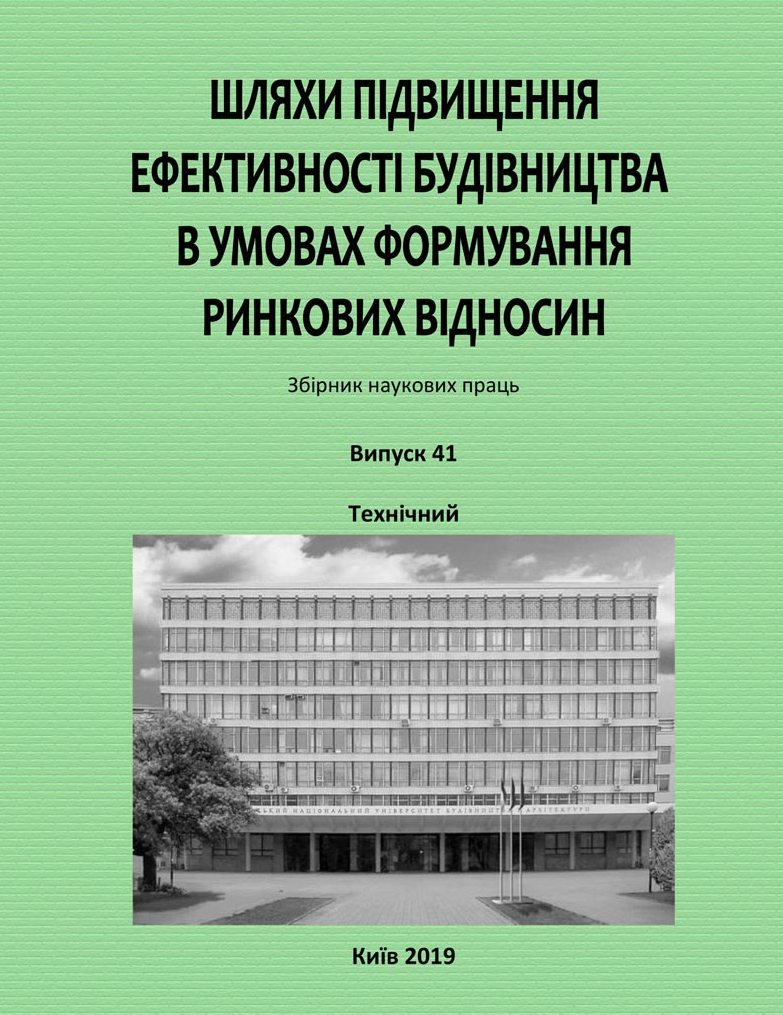Advantages and disadvantages of the enacted law of Ukraine On amendments to the Law of Ukraine
DOI:
https://doi.org/10.32347/2707-501x.2019.41.99-105Keywords:
parametric method, administrative method, target method, regulation in constructionAbstract
Three methods of normalization in construction are analyzed: management, target and parametric. Recently, a regulatory method of normalization in construction has been used in Ukraine, which consists in a more elemental description of a construction object, in accordance with which solutions, structures, materials, performance, etc. are offered. The application of the regulatory method of regulation does not provide an alternative, does not clarify the objectives of the regulations, do not formulate, as a rule, functional requirements for the function that the object of construction should perform.
The parametric rationing method is based on a hierarchy of goals and objectives and is more progressive. It involves setting the parameters that determine the safety, functionality, and quality of the entity. The parameters are goals, functional requirements and criteria that the entity should meet.
The target method is transient and includes elements of the control and parametric methods. This method was developed as an evolutionary transition in order to prevent unwanted consequences in the abrupt transition from the regulatory method to the parametric
The advantages and disadvantages of the parametric method of rationing, which becomes a priority with the enactment of this law, are analyzed. This makes it possible to develop better building standards that do not contain unreasonable design requirements and will promote the use of innovative and advanced technologies and solutions.
The procedure of promulgation of building norms is being improved. The texts of state building codes included in the central building code fund and industry building codes included in sectoral building code funds shall be published on the official websites of the relevant constituent entities. Access to such texts will be free of charge.
It is established that the adoption of the law provides an opportunity to improve the quality of building codes and reduce the number of unreasonable mandatory requirements, which will contribute to the introduction of innovative and progressive technologies, enhance the investment attractiveness of the construction market and further development of the construction industry.
References
Zakon Ukrainy «Pro vnesennia zmin do Zakonu Ukrainy Pro budivelni normy shchodo udoskonalennia normuvannia u budivnytstvi» 2019. № 156. [Elektronnyi resurs]. URL: https://zakon.rada.gov.ua/laws/show/156-20
Komentari yurysta shchodo vvedennia parametrychnoho metodu v budivnytstvi. [Elektron]. URL: http://kbu.org.ua/index.php?id=1350
Tarasiuk, V.H. & Bielokon, O.L. (2018). Parametrychnyi metod normuvannia u budivnytstvi. Nauka ta budivnytstvo. № 4. pp. 13–17. [Elektron. resurs]. URL: http://nbuv.gov.ua/UJRN/ntab_2018_4_4
Tytok, V.V. (2019). Orhanizatsiino-ekonomichnyi mekhanizm vzaiemodii uchasnykiv investytsiino-budivelnoho protsesu. Budivelne vyrobnytstvo. № 66. pp. 73–79
DSTU-N B A.3.1-33:2015. Nastanova shchodo pidhotovky ta skladannia dohovoriv pidriadu na vykonannia proektno-vyshukuvalnykh ta budivelnykh robit. [Chynnyi vid 2016-10-01]. Vyd. ofits. Kyiv: Minrehion Ukrainy, 2016. 21 s.
Rubtsova, O.S.,. Kishchenko, T.Ie. (2019). Problemy implementatsii MSFZ v diialnist budivelnykh pidpryiemstv Ukrainy. Shliakhy pidvyshchennia efektyvnosti budivnytstva v umovakh formuvannia rynkovykh vidnosyn. Vyp. 40 (ekonomichnyi).. pp.36-39.
Shumak, L.V., Hrytsenko, O.S. (2019). Osoblyvosti vyznachennia koshtorysnoi vartosti na proektni roboty za kordonom. IV Mizhnarodna naukovo-tekhnichna konferentsiia «Efektyvni tekhnolohii v budivnytstvi», pp. 142–143.
Shevchuk, K.I. (2017). Osnovy koshtorysnoho normuvannia u budivnytstvi Metodychni vkazivky do vykonannia indyvidualnoi roboty dlia studentiv spetsializatsii “Vartisnyi inzhynirynh u budivnytstvi” . KNUBA. s.30.
Kulyk, M.M., Kulyk, T.R. (2017). Osoblyvosti upravlinnia budivelnoiu orhanizatsiieiu na zruinovanykh terytoriiakh Naukovyi visnyk Mukachivskoho derzhavnoho universytetu Seriia: Ekonomika: zb. nauk. pr. Vyp. 1(7). pp.150–153
Shevchuk, K.I., Zakorko, P.P., Shevchuk, O.K. (2016). Rozvytok vartisnoho inzhynirynhu. Budivelne vyrobnytstvo. Vyp. 61.
Sorokina, L.V., Hoiko, A.F. (2015). Doslidzhennia ekonomichnykh vazheliv zabezpechennia rozvytku budivelnoi haluzi. Budivelne vyrobnytstvo, №59. pp.6–15.
Hoiko A.F., Hrytsenko O.S., Shevchuk K.I. ta in. (2015). Ekonomika proektuvannia, K.:KNUBA 236 p.
Downloads
How to Cite
Issue
Section
License
Copyright (c) 2020 T. Kulyk, М. Kulyk

This work is licensed under a Creative Commons Attribution 4.0 International License.
Authors who publish with this journal agree to the following terms:
- Authors retain copyright and grant the journal right of first publication with the work simultaneously licensed under a Creative Commons Attribution License that allows others to share the work with an acknowledgement of the work's authorship and initial publication in this journal.
- Authors are able to enter into separate, additional contractual arrangements for the non-exclusive distribution of the journal's published version of the work (e.g., post it to an institutional repository or publish it in a book), with an acknowledgement of its initial publication in this journal.
- Authors are permitted and encouraged to post their work online (e.g., in institutional repositories or on their website) prior to and during the submission process, as it can lead to productive exchanges, as well as earlier and greater citation of published work (See The Effect of Open Access).

